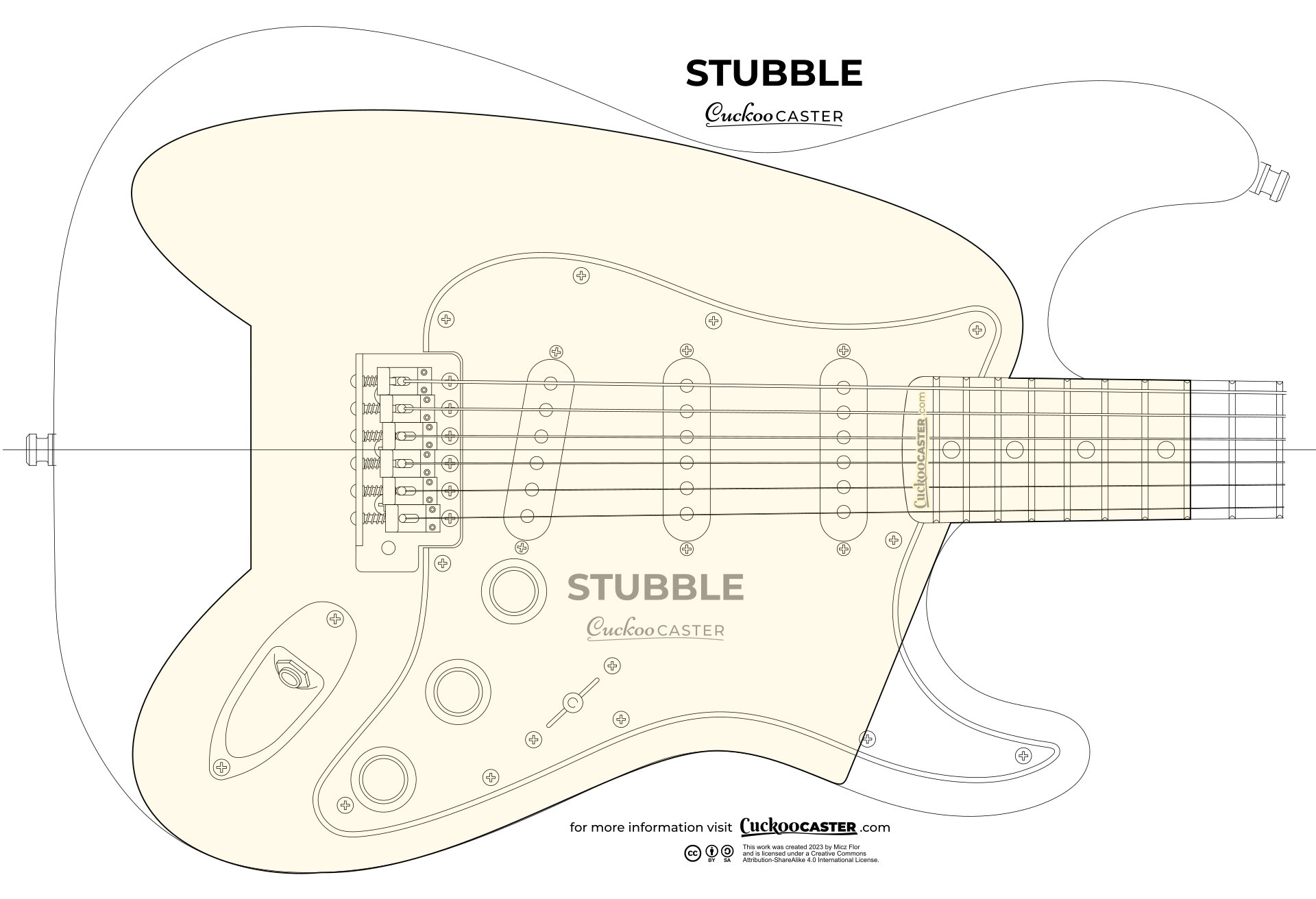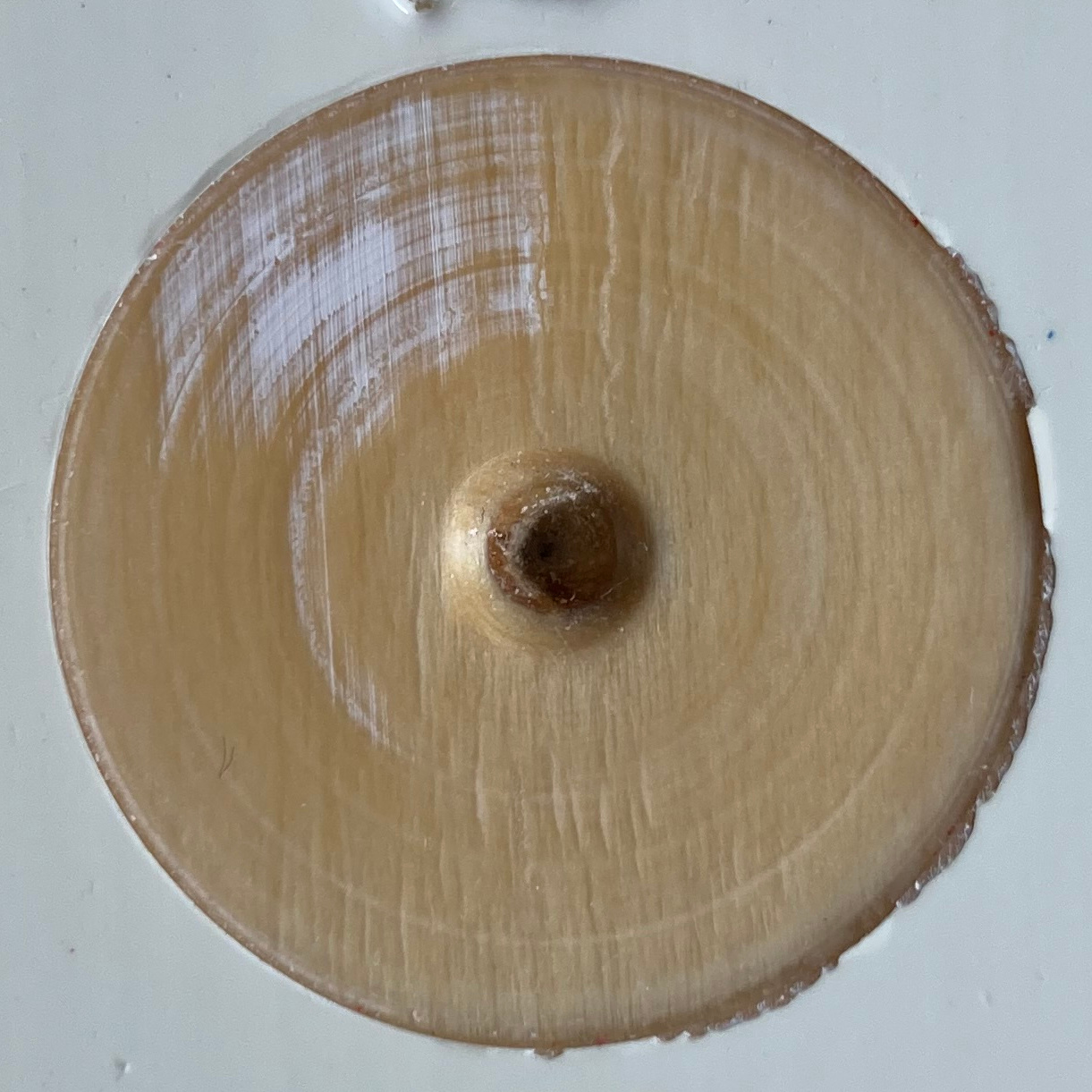
STUBBLE trouble
Built with an edge for comfort.
The STUBBLE design was made for comfort, petite size and ‘headless ready’. While the overall shape is far from trying to please the eye, the comfort for the player does play a crucial role.
But before we get into the details, I want to credit the inspiration for this design. I like to think of it as dreamy dance sequence in a Nouvelle Vague movie, where ‘Billy-Bo’ and ‘Iris’ (Czech Jolana Tele copy) step out of the frame in a close embrace. The Inspiration of ‘Billy Bo’ made me keep the angled straight line at the bottom right where the bottom horn used to be. This straight cut keeps the bottom curve intact, allowing for comfortable playing when sitting down.
The ‘Iris’ – one of my favourite guitars that I owned and sold – is a very ruddy workhorse of a Tele copy produced in the Czech Republic prior to the fall of the wall. What really got me, was the details that the engineers came up with when making that copy. One was the front strap pin: you could unscrew the pin and pull it out, revealing a small screw driver for minor guitar adjustments. The second one was the fact that they gave the ‘Iris’ two strap pins at the back, which meant you could put it down, resting it safely on two pins and lean it against the wall. The STUBBLE has even two designated bumbling feet to hold the pins. I always found that very comfortable.
Another comfort is the pickguard adjustment. Because the bottom horn is cut off in a straight line, the pickguard is easy to adjust. You are welcome.
STUBBLE has a petite body, but one that stands out in the crowd. It’s got the outer-space-vibe of some 1970s Teisco models.
The indentation behind the bridge makes it – what I call – ‘headless ready’. You can just use the normal Strat bridge, of course. But if you want to fit a headless bridge onto the body cou can do both: either screw it to the body from the top or mount a bridge system where the lower end needs to float freely, because you need to turn the screws to tune the guitar. Because of the two bobbly legs, you can lean the STUBBLE against the wall without damaging the headless bridge.

Identify your Cuckoocaster
The unique fingerprint on every instrument
Beneath the neck plate of every of my Cuckoocaster builds, you can find a 25mm round fingerprint, showing the unique structure of the wood of the instrument. If it matches the image shown here, congratulations: you got yourself this exact original Cuckoocaster!